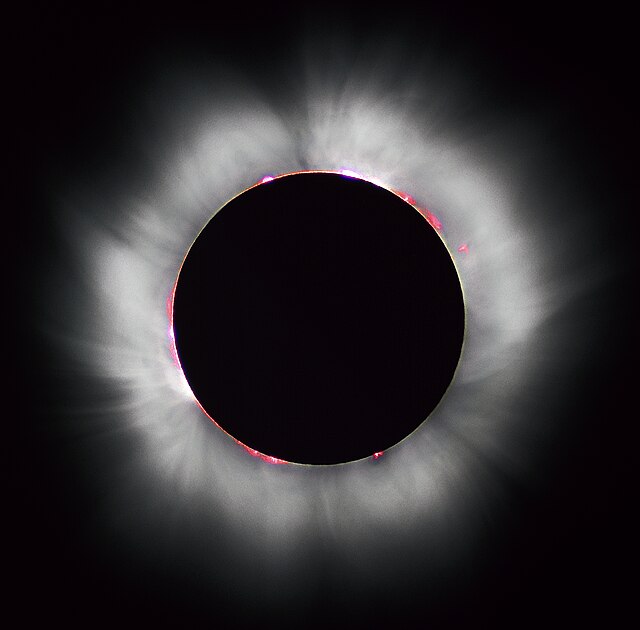The saros is a period of exactly 223 synodic months, approximately 6585.321 days, or 18 years, 10, 11, or 12 days, and 8 hours, that can be used to predict eclipses of the Sun and Moon. One saros period after an eclipse, the Sun, Earth, and Moon return to approximately the same relative geometry, a near straight line, and a nearly identical eclipse will occur, in what is referred to as an eclipse cycle. A sar is one half of a saros.
Antikythera Mechanism Saros cycle for the prediction of eclipses ΣΚΓ′, in the red rectangle, and means 223 months. Written between 150 and 100 BCE
An eclipse is an astronomical event which occurs when an astronomical object or spacecraft is temporarily obscured, by passing into the shadow of another body or by having another body pass between it and the viewer. This alignment of three celestial objects is known as a syzygy. An eclipse is the result of either an occultation or a transit. A "deep eclipse" is when a small astronomical object is behind a bigger one.
Totality during the 1999 solar eclipse. Solar prominences can be seen along the limb (in red) as well as extensive coronal filaments.
The shadow of an eclipse on Earth as seen from space
The progression of a solar eclipse on August 1, 2008, viewed from Novosibirsk, Russia. The time between shots is three minutes.
This print shows Parisians watching the solar eclipse of July 28, 1851





